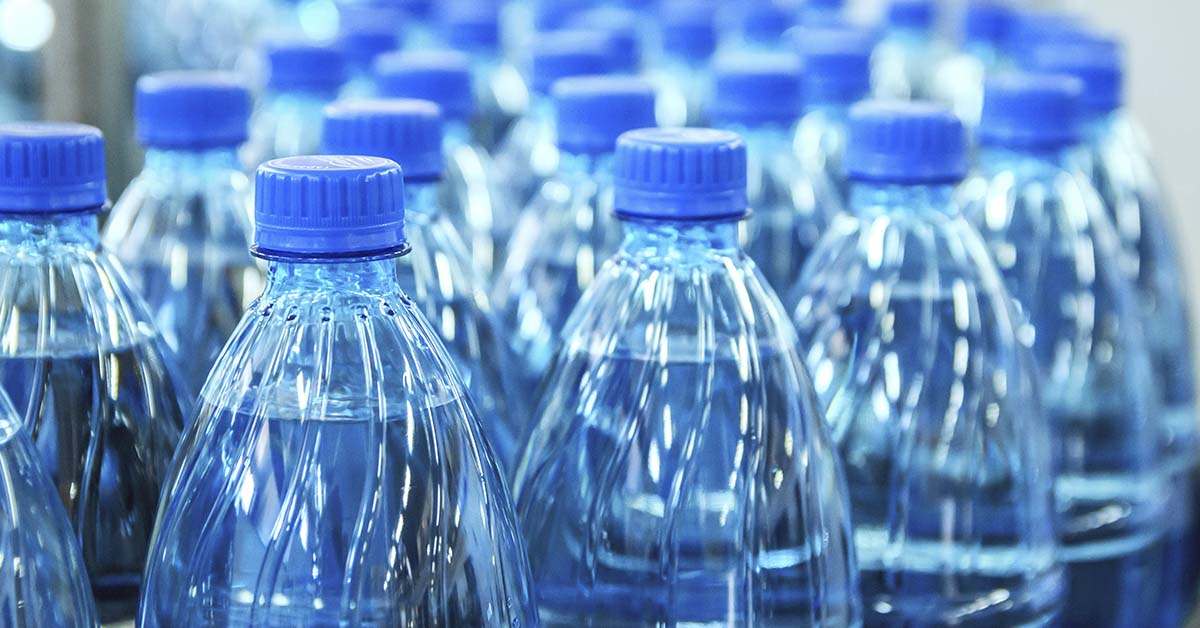Bottled water has long been considered a convenient and reliable source of hydration. However, a recent study conducted by researchers at Columbia and Rutgers universities has shed light on a concerning discovery – nanoplastics in bottled water. But what exactly are nanoplastics, and how do they affect our health? Let’s discuss the study’s findings, explore their potential impact on human health, and ways to minimize exposure to nanoplastics.
What are Nanoplastics and What Are They Doing In Bottled Water?
Nanoplastics are minuscule fragments of plastic measuring less than a micron in size. To put it into perspective, there are 25,400 microns in an inch, and a human hair is approximately 83 microns wide. Unlike larger microplastics that have been previously studied, nanoplastics are invisible to the naked eye. They are often formed through the degradation of larger plastics or are intentionally manufactured for various industrial purposes. This is what the researchers at Columbia and Rutgers universities have discovered in bottled water. (1)
Findings of the Study
The groundbreaking study analyzed samples from three common bottled water brands. They discovered that the average liter of bottled water contains nearly a quarter million nanoplastic particles. The particle levels ranged from 110,000 to 400,000 per liter, averaging around 240,000. This indicates that there are 10 to 100 times more nanoplastics in bottled water compared to slightly larger microplastics.
The researchers speculate that a significant portion of the nanoplastics result from plastic contaminants derived from the bottles themselves and the reverse osmosis membrane filters used to ensure the water’s purity. Although the study did not disclose the specific brands tested, the researchers emphasized that they were common brands purchased from a Walmart store.
Read: There Is No Excuse for You to Casually Drink Bottled Water
Potential Health Impacts
The study does not definitively determine whether nanoplastics are harmful to human health. However, researchers have noted that these tiny plastic particles have been found in the tissues of mammals, raising concerns about potential health risks. Currently, ongoing research is focusing on evaluating the effects of nanoplastics on cellular activity and overall well-being.
“We don’t know if it’s dangerous or how dangerous,” said study co-author Phoebe Stapleton, a toxicologist at Rutgers in New Jersey. “We do know that they are getting into the tissues (of mammals, including people) and the current research is looking at what they’re doing in the cells.” (2)
That being said, other scientists are cautious. They believe that the problem isn’t the nanoplastics themselves, but rather what else is coming along with them.
“The danger of the plastics themselves is still an unanswered question. For me, the additives are the most concerning,” said Duke University professor of medicine and comparative oncology group director Jason Somarelli, who wasn’t part of the research. “We and others have shown that these nanoplastics can be internalized into cells and we know that nanoplastics carry all kinds of chemical additives that could cause cell stress, DNA damage and change metabolism or cell function.”
Preventing Exposure to Nanoplastics
As the researchers stated, they still don’t know what, if any, impact on human health these water bottle nanoplastics could cause. While the long-term effects of nanoplastics are still under review, being proactive in minimizing exposure is crucial. Here are some practical steps you can take to reduce your consumption of nanoplastics:
- Opt for alternatives: Consider switching to tap water or investing in home filtration systems that can remove contaminants, including nanoplastics.
- Use reusable bottles: Instead of relying on single-use bottled water, choose environmentally friendly alternatives such as stainless steel or glass bottles.
- Be cautious with plastic containers: When using plastic containers, avoid exposing them to excessive heat or reusing them multiple times, as this can increase the likelihood of plastic degradation and nanoplastic release.
- Support comprehensive plastic waste management: Advocate for policies that promote recycling, waste reduction, and responsible plastic disposal to tackle the larger issue of plastic pollution.
The Bottom Line
The study’s findings emphasize the pervasive presence of nanoplastics in bottled water. While the potential health risks associated with nanoplastic consumption are still being investigated, minimizing exposure to these microscopic plastic particles is a prudent approach. Choosing alternative water sources, utilizing reusable bottles, and supporting sustainable practices contribute to reducing our overall plastic consumption. By taking these steps, we can protect our health and play a part in mitigating the global plastic pollution crisis.
Keep Reading: Kids Don’t Need Plastic Junk. So, Please Stop Buying It.
Sources
- “Microplastics vs Nanoplastics: What’s the Difference?” Pollution Solutions. February 28, 2022.
- “When you drink bottled water, you’re drinking lots and lots of nanoplastics.” CBC. The Associated Press. January 10, 2024

